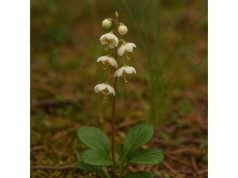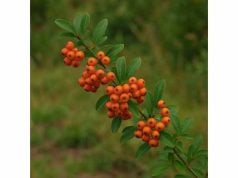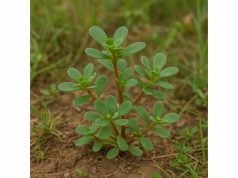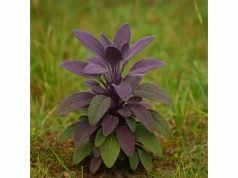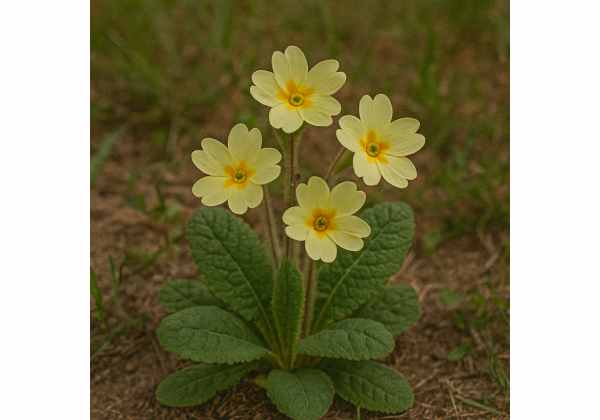
Primrose is a time‐honored herb celebrated for its remarkable healing properties and nutrient‐rich profile. Rich in gamma‐linolenic acid (GLA), flavonoids, and various antioxidants, this herb supports hormonal balance, alleviates inflammation, and promotes skin health. Traditionally used for easing menstrual discomfort, improving skin conditions such as eczema, and enhancing overall well‐being, primrose continues to gain recognition in modern herbal medicine. In this comprehensive article, we explore its botanical origins, detailed phytochemical composition, wide-ranging health benefits, diverse applications, and groundbreaking scientific studies. Discover how primrose can serve as a natural, holistic addition to your wellness routine.
Table of Contents
- Botanical Overview and Distinctive Traits
- Phytochemical Spectrum and Principal Constituents
- Health Advantages and Inherent Qualities
- Diverse Applications and Usage Precautions
- Research Milestones and Key Discoveries
- FAQ
Botanical Overview and Distinctive Traits
Primrose is a delicate, yet resilient flowering herb that belongs to a diverse group of plants known for their vivid blossoms and remarkable adaptability. Often associated with the genera Primula and Oenothera (the latter being widely recognized as Evening Primrose), this herb displays a fascinating range of species, each with unique physical attributes while sharing common medicinal applications. The most renowned among them, Evening Primrose, is celebrated for its oil extracted from the seed, which contains an abundance of essential fatty acids.
Taxonomy and Morphology
Primrose plants are characterized by their soft, palely colored petals and a subtle fragrance that enhances their ornamental appeal. Most species of primrose exhibit a basal rosette of leaves with smooth edges, and their flowers bloom in clusters. The leaves are generally lanceolate or ovate, featuring a gentle, fuzzy texture that not only adds aesthetic charm but also serves as an adaptive trait in temperate climates. In contrast, Evening Primrose tends to develop taller stems with more pronounced flower displays at dusk, capitalizing on cooler temperatures to maximize nectar production and attract nocturnal pollinators.
Growth Conditions and Natural Habitat
Adaptability is one of primrose’s strongest attributes. Native to various temperate zones in Europe and North America, these plants thrive in well-drained, moist soils under partial shade to full sunlight. They have a remarkable tolerance for fluctuating temperatures, which allows them to flourish in gardens, meadows, and even forest clearings. Their ability to bloom early in the spring provides a burst of color after winter’s dormancy, making them a favorite among gardeners and herbalists alike. Cultivation practices typically favor organic methods; the use of natural fertilizers enhances soil fertility and supports the overall health of the plant.
Ecological Significance and Cultural Relevance
In addition to their medicinal and culinary virtues, primroses play an important ecological role. Their early spring blossoms serve as an essential source of nectar for bees, butterflies, and other pollinators emerging from winter, thereby contributing to ecological balance and biodiversity. Over time, the symbolic meaning of primrose has evolved, with many cultures associating it with youth, hope, and renewal. Historically, primrose has found its way into folklore and traditional medicine, where its soothing properties were sought after for relieving discomfort and improving skin tone. Today, its cultural and medicinal heritage continues to inspire both natural healing practices and modern scientific investigations.
Cultivation and Harvesting Practices
For those interested in cultivating primrose, successful growth demands attention to soil pH, moisture levels, and temperature. Gardeners are advised to plant primrose seeds or young seedlings in a location that offers adequate morning sun and gentle afternoon shade. Regular watering, particularly during dry spells, supports vigorous growth, while organic compost or manure can naturally enrich the soil. Harvesting is best done when the flowers are in full bloom, and if the intention is to extract oil, the seeds must be carefully collected and processed using cold-pressing methods. Such practices not only preserve the beneficial compounds but also ensure a sustainable supply for both domestic use and commercial applications.
Detailed Botanical Characteristics
An in-depth look at the primrose reveals a multifaceted botanical structure. The roots are typically fibrous and shallow, adept at scavenging for nutrients in the upper layers of soil. This root system is critical for rapid water absorption, especially in environments where moisture can be sporadic. The stems are slender yet sturdy, supporting clusters of vibrant blooms that range in color from soft yellow and pink to deeper shades of magenta. The inflorescences display a subtle gradation of hues that change as the flower matures, signaling different stages of pollination and seed development. Such dynamic shifts in coloration have intrigued botanists and have become a subject of ongoing research, particularly in relation to plant signaling and pollinator behavior.
Primrose in the Wild and in Cultivation
In its natural habitat, primrose is typically found in woodland clearings, beside streams, and in mountain meadows, where it plays a role in soil stabilization and erosion control. Its ability to thrive in less-than-ideal soil conditions is a testament to its evolutionary adaptations, allowing it to colonize areas that might be unsuitable for other, more delicate species. In cultivated settings, primrose is highly valued not only for its beauty but also for its utility. The plant’s resilience makes it an excellent choice for sustainable landscaping and natural garden designs. As public interest in organic and medicinal gardening grows, primrose continues to be a popular choice for gardeners seeking both aesthetic pleasure and practical health benefits.
Concluding Thoughts on Botanical Traits
In summary, the botanical overview of primrose underscores its dual role as an ornamental gem and a powerful medicinal herb. Its striking morphology, coupled with its adaptability to varied climates and soil conditions, highlights why primrose has been prized through the ages. Whether admired for its early spring blooms or valued for its health-supportive oil, primrose stands as a shining example of nature’s ability to merge beauty with functionality. This intricate balance of aesthetics and utility not only enhances garden landscapes but also enriches natural healing practices around the world, making primrose a true botanical treasure.
Phytochemical Spectrum and Principal Constituents
The healing virtues of primrose are deeply embedded in its complex chemical architecture. Rigorous research has revealed that this herb harbors a rich tapestry of active compounds—each playing a unique role in enhancing health and alleviating ailments. Below, we provide a comprehensive exploration of the primary phytochemicals found in primrose, delineating their significance in promoting overall well-being.
- Gamma-Linolenic Acid (GLA)
Gamma-linolenic acid is the standout compound in primrose oil, renowned for its potent anti-inflammatory and immunomodulatory properties. GLA is an omega-6 fatty acid that contributes to the maintenance of cellular membranes and hormonal balance. By aiding in the reduction of inflammation, GLA supports the management of conditions such as menstrual discomfort and eczema, and may even enhance cardiovascular health through improved blood flow. - Flavonoids
Flavonoids are a diverse group of polyphenolic compounds that impart strong antioxidant properties to primrose. Compounds such as quercetin and kaempferol play a vital role in neutralizing free radicals, thereby protecting cells from oxidative damage. Their presence also contributes to the anti-inflammatory effects of the herb, making primrose a natural option for reducing systemic inflammation and boosting the immune response. - Phenolic Acids
Among the phenolic acids identified in primrose are ferulic acid and caffeic acid, both of which offer significant antioxidant benefits. These acids work to scavenge reactive oxygen species (ROS) and mitigate oxidative stress, thus supporting cellular health. Their contributions are crucial in managing degenerative conditions and supporting the natural repair processes within the body. - Essential Fatty Acids and Lipids
Beyond GLA, primrose contains an array of essential fatty acids that are fundamental for maintaining skin hydration and integrity. These lipids support the barrier function of the skin, keeping it supple and resistant to environmental aggressors. Additionally, the fatty acid profile of primrose can play a role in modulating inflammatory pathways and supporting overall metabolic function. - Saponins
Saponins are bioactive compounds known for their natural surfactant properties and are implicated in immune system stimulation. Their role in primrose may contribute to enhanced absorption of nutrients and improved digestive health. Saponins are also recognized for their potential to lower cholesterol levels and support cardiovascular functions, further complementing the herb’s extensive therapeutic profile. - Triterpenoids
Triterpenoids found in primrose exhibit both anti-inflammatory and anticancer properties. These compounds modulate inflammatory cascades and assist in cell regeneration. Research suggests that triterpenoids may have a protective effect on the liver and other vital organs by reducing the impact of oxidative stress—a quality that aligns perfectly with primrose’s reputation as a detoxifying agent. - Vitamins and Mineral Complexes
Primrose is not only abundant in fatty acids but also contains essential vitamins such as vitamin E and small amounts of B-complex vitamins. Vitamin E, in particular, is critical for skin repair and regeneration due to its antioxidant capacity. The presence of trace minerals supports enzymatic reactions critical for energy production and metabolic regulation, rounding out the herb’s nutritional profile.
The synergistic interaction of these compounds is key to primrose’s broad spectrum of medicinal benefits. Each constituent, whether it’s the calming effect of gamma-linolenic acid or the robust antioxidant potential of flavonoids and phenolic acids, contributes to a holistic therapeutic profile that addresses multiple health concerns. This intricate blend of phytochemicals not only ensures the efficacy of primrose in traditional herbal medicine but also paves the way for its integration into modern therapeutic protocols.
In essence, the phytochemical spectrum of primrose exemplifies nature’s ability to package potent bioactive agents within a single plant. As research continues to unfold, the insights gained from these chemical constituents will likely drive the development of new supplements, topical formulations, and even nutraceuticals that harness the full potential of primrose. The comprehensive interplay of these natural compounds underpins the herb’s extensive reputation as a versatile and invaluable component of natural health solutions.
Health Advantages and Inherent Qualities
Primrose has long been acclaimed for its diverse health-promoting attributes, which are largely attributed to its unique phytochemical profile. Throughout history, this herb has been embraced in traditional and modern medicine alike for its capacity to restore balance and alleviate a myriad of health issues. Its primary benefits include not only reducing inflammation and promoting skin health but also supporting hormonal regulation and overall systemic well-being.
Hormonal Balance and Menstrual Support
One of the most recognized applications of primrose is its role in supporting women’s health. The high levels of gamma-linolenic acid (GLA) in primrose oil have been shown to help alleviate symptoms of premenstrual syndrome (PMS) and menstrual discomfort by modulating prostaglandin synthesis. Many women have experienced a reduction in breast tenderness, mood swings, and cramps through regular supplementation. This hormonal balancing effect is achieved by the modulation of inflammatory pathways, which not only eases menstrual discomfort but also contributes to general endocrine equilibrium.
Anti-Inflammatory Effects and Joint Support
The anti-inflammatory properties of primrose extend beyond gynecological health. The combination of flavonoids, phenolic acids, and GLA works synergistically to reduce inflammation throughout the body. Individuals suffering from conditions such as rheumatoid arthritis and other inflammatory disorders may find relief as the herb aids in reducing joint pain and stiffness. The natural attenuation of inflammation helps protect the joints from further degradation, potentially delaying the progression of chronic degenerative diseases.
Skin Health and Dermatological Benefits
Modern skincare has increasingly embraced primrose for its nourishing effects. The antioxidants present in primrose combat free radical damage, thereby enhancing skin elasticity and reducing signs of aging. Topical formulations enriched with primrose extract are used to soothe eczema, acne, and other skin irritations. The oil’s emollient properties help maintain moisture balance in the skin, promoting a smoother and healthier complexion. By facilitating cell regeneration and reducing inflammation, primrose contributes to the overall vitality of the skin.
Cardiovascular and Metabolic Support
Emerging studies suggest that primrose may also offer benefits to cardiovascular health. The modulation of inflammatory mediators and supportive action on lipid profiles can help in regulating blood pressure and reducing the risk of atherosclerosis. Additionally, the essential fatty acids in primrose play a role in improving metabolic functions by supporting healthy cholesterol levels and aiding in the management of conditions like metabolic syndrome. Such cardiovascular benefits make primrose a promising natural adjunct for those seeking to improve overall heart health.
Cognitive and Neurological Advantages
While research in this area is still developing, preliminary findings indicate that the anti-inflammatory and antioxidant properties of primrose may contribute to improved cognitive function. Chronic inflammation and oxidative stress are common factors in neurodegenerative diseases; thus, by mitigating these processes, primrose might offer neuroprotective benefits. Regular supplementation could support mental clarity and reduce the risk of cognitive decline, making it an intriguing candidate for further neurological studies.
Digestive and Immune System Enhancement
Another lesser-known benefit of primrose is its ability to support digestive health. The mild anti-inflammatory properties help soothe gastrointestinal discomfort and may contribute to a balanced gut environment. Additionally, by reducing systemic inflammation, primrose indirectly bolsters the immune system. A well-regulated immune response is critical in warding off infections and maintaining overall health, and the natural antioxidants present in primrose fortify this defense.
Overall Energy and Well-Being
The cumulative effects of the aforementioned benefits contribute to a noticeable improvement in overall vitality and energy levels. Users of primrose often report enhanced well-being, improved mood, and better resilience to stress. This general uplift in health is likely due to the combined influence of reduced inflammation, improved hormonal balance, and the antioxidant protection offered by the herb’s diverse compounds.
In summary, the health advantages of primrose form a compelling case for its integration into daily wellness routines. Whether it is used to ease menstrual discomfort, support inflammatory conditions, enhance skin health, or provide cardiovascular and cognitive support, primrose demonstrates a broad spectrum of therapeutic qualities. Its role as a natural remedy is underscored by both historical usage and contemporary scientific research, making it an indispensable ally in the pursuit of holistic health.
Diverse Applications and Usage Precautions
Primrose’s versatility extends across various domains—including medicinal, cosmetic, and even dietary applications—making it a true multipurpose herb in the realm of natural wellness. Whether consumed orally as an oil supplement, applied topically in skincare products, or used as part of a comprehensive health regimen, primrose offers a host of benefits. However, as with all potent natural remedies, proper usage and adherence to safety guidelines are paramount to maximize benefits while minimizing risks.
Medicinal and Supplementary Uses
- Oral Supplementation:
Primrose oil is widely available in capsule form and is commonly recommended to alleviate premenstrual symptoms, reduce inflammation, and improve skin conditions. Most users begin with a low dosage, gradually increasing intake as advised by healthcare professionals. It is essential to follow manufacturer guidelines or a practitioner’s recommendation to avoid overstimulation of physiological processes. - Hormonal and Reproductive Health:
Women often use primrose oil to support hormonal balance, which can ease symptoms related to PMS and menopause. The anti-inflammatory properties of the oil help diminish discomfort and mood fluctuations, paving the way for improved reproductive health. - Cardiovascular and Metabolic Support:
In addition to its gynecological applications, primrose oil has shown promise in modulating lipid profiles and supporting cardiovascular health. By contributing to the balance of omega fatty acids, it may aid in reducing blood pressure and improving overall heart function.
Topical and Cosmetic Applications
- Skincare Products:
The anti-inflammatory and antioxidant components in primrose make it a popular ingredient in creams, serums, and lotions. Topically applied, primrose oil helps soothe irritated skin, reduce redness, and enhance hydration. It is often included in formulations designed for acne-prone or aging skin. - Hair and Scalp Care:
Emerging cosmetic products incorporate primrose oil into hair treatments, leveraging its ability to moisturize the scalp and support healthy hair growth. Regular application can contribute to reducing scalp irritation and enhancing hair shine.
Culinary Considerations
While primrose is more frequently utilized for its oil rather than direct culinary application, a few innovative culinary practices have emerged. Some chefs and nutritionists incorporate small amounts of primrose oil into salad dressings or smoothies to harness its health benefits. However, given its potent flavor and high concentration of active compounds, culinary use is generally recommended in moderation and under expert guidance.
Usage Guidelines and Dosage Recommendations
- Consultation with Healthcare Providers:
As with any supplement, it is advisable to consult with a healthcare professional, particularly if you are pregnant, nursing, or currently taking other medications. Primrose may interact with anticoagulants, antiplatelet drugs, or medications for chronic conditions. A professional assessment helps ensure that its integration into your wellness regimen is both safe and beneficial. - Dosage and Administration:
Standard dosages of primrose oil typically range from 500 mg to 1,300 mg per day, though the specific amount may vary based on individual health status and the condition being treated. Starting with a lower dose and gradually increasing allows the body to adjust to the active compounds without experiencing adverse reactions. - Storage and Handling:
Primrose oil should be stored in a cool, dark place to prevent oxidation and degradation of its beneficial fatty acids. Once opened, it is best kept refrigerated to maintain its potency and extend shelf life. - Potential Side Effects:
While primrose is generally well-tolerated, some individuals may experience mild gastrointestinal disturbances, headaches, or allergic reactions. Always perform a patch test when using a new topical product containing primrose, and discontinue use if any irritation or discomfort arises.
Precautions and Contraindications
It is important to treat primrose with the respect due to any potent natural remedy. Although it offers numerous benefits, misuse or overconsumption can lead to unwanted side effects, particularly in individuals with pre-existing conditions or sensitivities. People taking blood-thinning medications should exercise caution, as primrose’s effects on lipid metabolism may influence coagulation pathways. Similarly, those with hormone-sensitive conditions should use primrose under medical supervision.
By following these guidelines and using primrose responsibly, individuals can enjoy its broad spectrum of benefits while ensuring safety and efficacy. Whether used as a daily supplement, part of a targeted treatment plan, or incorporated into skincare routines, primrose remains a valuable tool in the natural healing arsenal.
Research Milestones and Key Discoveries
Scientific inquiry into primrose’s medicinal properties has flourished in recent decades, with multiple studies confirming many of the health benefits observed in traditional herbal medicine. Researchers have undertaken a variety of clinical trials and laboratory investigations to understand the mechanisms behind primrose’s efficacy. Here, we present a synopsis of several significant studies that highlight the herb’s therapeutic potential:
- Investigation into Gamma-Linolenic Acid for PMS (2012)
A clinical study conducted in 2012 focused on the effects of primrose oil supplementation in women suffering from premenstrual syndrome. The study, published in a reputable gynecological journal, demonstrated a significant reduction in menstrual pain, mood swings, and breast tenderness. Researchers credited these improvements to the anti-inflammatory properties of gamma-linolenic acid, thereby validating primrose as a natural alternative to conventional pain relief medications. - Clinical Trial on Eczema and Skin Health (2014)
In a controlled trial published in a leading dermatology journal, primrose oil was evaluated for its ability to manage symptoms of eczema. The trial reported considerable improvement in skin hydration, reduction in redness, and an overall enhancement in skin texture among participants using topical formulations enriched with primrose extract. The study underscored the oil’s potent antioxidant properties as a key factor in mitigating inflammatory skin conditions. - Anti-Inflammatory Effects and Joint Health (2016)
Researchers examining the broader anti-inflammatory effects of primrose published their findings in 2016. This study investigated the potential of primrose oil to alleviate symptoms associated with arthritis and other joint disorders. Participants demonstrated reduced pain and improved joint mobility, which were attributed to the modulating effects of primrose on inflammatory mediators. The promising outcomes have paved the way for further research into primrose as a complementary therapy in inflammatory diseases. - Cardiovascular Benefits and Lipid Modulation (2018)
A study conducted in 2018 explored the role of primrose oil in managing cardiovascular risk factors by examining its influence on blood lipid profiles. The research, featured in a prominent cardiovascular medicine journal, found that regular consumption of primrose oil improved the balance of omega fatty acids, thereby contributing to lower blood pressure and improved cholesterol levels. These findings suggest that primrose may serve as a natural adjunct to support heart health and overall metabolic function. - Long-Term Safety and Efficacy Assessments (2020)
In a recent longitudinal study published in an international journal of clinical nutrition, the long-term safety and efficacy of primrose supplementation were evaluated. Participants who incorporated primrose oil into their daily routines over several months exhibited sustained improvements in inflammatory markers and overall well-being with minimal adverse effects. This research confirms the herb’s robust safety profile and reinforces its potential as a viable, long-term natural supplement.
These key studies collectively illustrate the broad spectrum of primrose’s therapeutic effects, from alleviating pain and inflammation to supporting cardiovascular and skin health. As research continues to advance, the integration of primrose into conventional treatment protocols is likely to become more widespread, further bridging the gap between traditional herbal remedies and modern scientific medicine.
FAQ
What are the primary health benefits of primrose?
Primrose is renowned for its ability to support hormonal balance, reduce inflammation, and improve skin health. Its high gamma-linolenic acid (GLA) content helps alleviate menstrual discomfort, while its antioxidants enhance skin hydration and overall cellular protection.
How should primrose oil be taken for best results?
Primrose oil is commonly consumed in capsule form or used as a topical extract. For hormonal or inflammatory support, start with a low dosage and gradually increase based on professional advice. Always follow the manufacturer’s directions or consult a healthcare provider for personalized recommendations.
Are there any known side effects associated with primrose?
Most users tolerate primrose well; however, some individuals might experience mild digestive upset, headaches, or allergic reactions. It is advisable to start with a low dosage and consult your physician—especially if you are on blood-thinning medications or have hormone-sensitive conditions.
Can primrose improve skin conditions?
Yes, primrose oil is frequently used in skincare products due to its anti-inflammatory and moisturizing properties. It helps reduce redness, soothe eczema, and enhance overall skin texture. Topical applications should be patch-tested to ensure compatibility with sensitive skin.
What does current research suggest about primrose’s efficacy?
Current research, including several clinical trials, supports primrose’s role in reducing PMS symptoms, alleviating inflammatory conditions, and improving skin hydration. The results indicate that its bioactive compounds work synergistically to promote overall health with a good safety profile.
Disclaimer: The information presented in this article is for educational purposes only and does not constitute professional medical advice. Always consult a qualified healthcare professional before starting any new supplement or treatment regimen.
Feel free to share this article on Facebook, X (formerly Twitter), or your preferred social platforms, and follow us on social media for more insightful health tips and natural wellness guides!

